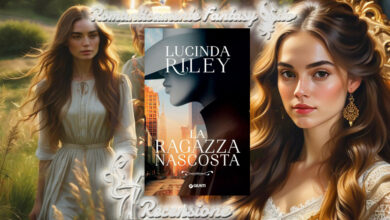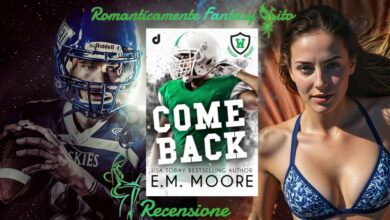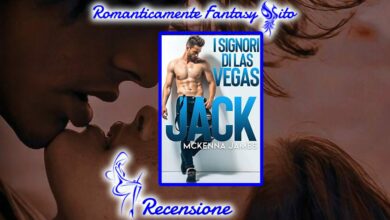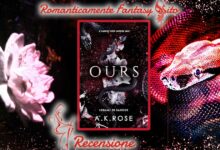Incontro con l’autore: A.M. Arthur
Care Fenici Arcobaleno, oggi siamo orgogliose di presentarvi l’intervista fatta da Ipanema a A.M. Arthur, autrice di romanzi male to male… Tutte le amanti del genere sperano che in Italia vengano tradotti tutti i suoi libri.
Di seguito trovate l’intervista tradotta e, in calce, l’originale… Buona lettura!


A.M. Arthur è nata e cresciuta nella stessa cittadina di cui le piace scrivere, situata a un tiro di schioppo dalla riviera che ospita resort di lusso e dal deserto. Una zona, la sua, caratterizzata da numerose fattorie a gestione famigliare da generazioni. A.M. immagina storie da quando era bambina, scarabocchiandole ovunque, sperando invano di zittire le voci dell’immaginazione. Subito affascinata dalla sfera dei legami tra uomini (la parola bromance non era ancora stata coniata a quell’epoca) ha recentemente scoperto le storie romantiche M/M, da cui è rimasta folgorata. (Le opere di A.M. Arthur sono pubblicate e sono disponibili presso la Carina Press, la Dreamspinner Press, la SMP Swerve e Briggs-King Books n.d.r.). Quando non tenta di esorcizzare le voci nella sua mente, si spende molto nel negozio al dettaglio che conduce, un’attività che mette a dura prova la sua pazienza ma che le fornisce anche molta ispirazione. La si può trovare anche in cucina dove finge di essere uno chef emergente sperando di non avvelenare se stessa e gli altri con i suoi esperimenti culinari.

D:Ciao, sono Ipanema e sono così felice di averti qui, sul blog Romanticamente Fantasy a rispondere alle mie domande! Grazie, grazie davvero tante! I lettori italiani saranno molto contenti di conoscerti meglio, dopo le recensioni ai tuoi libri tradotti in italiano, le serie Costi di Riparazione, (Amarganta) e All Saints (Harper & Collins)
R: Grazie a voi per avermi invitata!
D: Prima di tutto, lasciami fare una domanda sullo scrivere: da quanto scrivi, professionalmente parlando, e perché? È una specie di necessità che provi, quella di buttare giù storie sulla carta o cos’altro?
R: Pubblico romanzi di genere differente dal 2008 ma non ho pubblicato il mio primo MM paranormal romance fino all’autunno del 2011, con la piccola casa editrice Musa Publishing. Nel 2012 la prima edizione di “Costi di Riparazione”, il mio primo M/M romance contemporaneo fu pubblicato dalla ormai liquidata Samhain Publishing. Mi racconto storie nella mente da quando ero una bambina, prima con i miei giocattoli e le bambole Barbie e più tardi con i personaggi della TV che amavo (non ho appreso la parola “fanfiction” fino a quando internet, al college, mi ha introdotto ai fandom online nel lontano 1998).
No so dire con certezza cos’è che mi spinge a scrivere queste storie. Provo una sorta di brivido nel condividere le mie idee con gli altri e ad intrattenerli con le mie creazioni. Volevo in qualche modo diventare una scrittrice professionista fin dall’epoca del college, e per farlo ho seguito varie strade, ma è stato il romance Male to Male che mi ha permesso di lasciare il mio lavoro full-time e diventare un’autrice a tempo pieno, cosa che ho fatto nel 2016. Ho dovuto sostenere moltissime sfide nel corso di questo cammino, ma non ci avrei mai rinunciato.
D: Hai una produzione incredibilmente prolifica nel campo dei romanzi: quante ore passi a scrivere le tue storie?
R: Dipende tutto da una lunga serie di fattori, ma la mia velocità media di scrittura è di 1000 parole all’ora, così quella di scrivere in bozza un romanzo di 70.000 parole dovrebbe, in linea di massima, avvenire in circa 70 ore. Ma questa stima non contempla minimamente il tempo che trascorro a revisionare, riscrivere, fare editing, correggere le bozze, eccetera. E comunque, sono una scrittrice a tempo pieno, perciò cerco di fare del mio meglio per utilizzare le mie ore settimanali, sia che si tratti di editing o promozione, ricerca, eccetera. Certe storie richiedono più tempo per essere scritte perché inciampo in qualche inconveniente, mentre altre le ho scritte di getto in poche settimane perché la storia semplicemente chiedeva di essere raccontata
D: Come scrivi? Fai schemi, scrivi outlines, decidi le tag-line e le log-line prima o altre tecniche che le scuole di scrittura insegnano oppure, al contrario, ti lasci trascinare dalla corrente?
R: In genere i miei libri iniziano con i due protagonisti. Devo conoscerli prima di poter raccontare la loro storia, così stilo la biografia per ogni personaggio: grandi eventi nelle loro vite, parenti, amici, fatti che compongono la loro visione del mondo, e cosa vogliono dalla vita. Per esempio, in “Costi di riparazione”, sapevo che Samuel stava cercando di ricominciare, non era alla ricerca di un nuovo amante e aveva il cuore spezzato. Sapevo anche che aveva un’indole protettiva e che si sarebbe lasciato trascinare nell’aiutare qualcuno come Rey, che era stato colpito così tante volte dalla vita e che pensava di non meritarsi altro che quell’estenuante ruota girevole per criceti che era la sua vita,
Nessuno dei due era interessato a una storia d’amore, ma è arrivata comunque.
Una volta che ho un’idea su uno dei miei protagonisti, o mi metto subito a scrivere o faccio un outline flessibile fino a un certo punto. Magari qualche capitolo con eventi che valgano la pena di essere raccontati, e poi scrivo il romanzo fino a quel punto. Una volta raggiunta la fine di quell’outline, o vado avanti a scrivere il resto fino alla fine, oppure mi fermo e scrivo ancora un altro outline. E lo chiamo flessibile perché gli outline non sono scolpiti nella pietra. Ho portato avanti eventi, o li ho tolti completamente, perché la storia mi aveva portato in una direzione differente mentre la stavo abbozzando. Mi piacciono gli outline flessibili, anche se molti scrittori ne hanno paura, perché a scuola ci hanno insegnato che bisogna seguire ciò che abbiamo scritto negli outline, ma quelli sono per i saggi scientifici, non per la fiction. Gli outline devono essere assolutamente flessibili e devono poter essere cambiati.
D: Leggo sul tuo sito web (https://amarthur.blogspot.com) che A.M. Arthur è un nom de plume, e che hai altri due pseudonimi per altri tipi di genere letterario in cui ti cimenti. Ci puoi dire perché la necessità di diversi pseudonimi e puoi rivelarci gli altri due e il genere che scrivi sotto di essi?
R: Le ragioni per l’uso di uno pseudonimo sono due: la prima è che quando ho iniziato a pubblicare come A.M. Arthur, volevo ricominciare da capo, completamente, proprio dall’inizio e costruire un nuovo brand. Il Male to Male Romance era ancora un genere in crescita che i principali blog di romance stavano iniziando a notare solo allora, amavo il M/M romance e volevo fare una prova. Sarò sempre grata ai lettori che sono rimasti con me per tutti questi anni. La seconda ragione è che ho una famiglia molto conservatrice e vivo in un’area molto tradizionalista (gli americani conservatori sono generalmente molto religiosi, anti-LGBT, anti-femministi eccetera). Non mi sentivo a mio agio nel far sapere alla mia famiglia che scrivo storie d’amore gay, anche se mi hanno etichettato come la “piccola liberale di famiglia”. E, senza rivelare gli altri miei pseudonimi, scrivo M/F urban fantasy e paranormal romance sotto di essi. So che alcuni dei miei colleghi autori di M/F hanno facilmente oltrepassato i confini per entrare nel M/M ma io preferisco mantenere, per ora, le cose separate.
D: Al momento hai ben 4 tra i tuoi libri tradotti in italiano: i lettori italiani infatti hanno scoperto la cittadina di Stratton con il #1 omonimo della serie “Costi di riparazione”, e il #2 “Il colore della Grazia” pubblicati da Amarganta, e “Qualunque cosa accada” e “Al momento giusto”, #1 e #2 della serie All Saints, editi da Harper & Collins. Sono bellissimi romanzi M/M ambientati in piccole cittadine americane. Perché hai scelto questi luoghi per le tue serie e cosa ti ha dato l’idea di queste ambientazioni? (La serie Costi di riparazione è situata a Stratton e si svolge interamente attraverso la vita dei dipendenti di un piccolo diner americano, il Dixie’s Cup, mentre All Saints è ambientato a Wilmington, e gravita attorno al dormitorio per senzatetto, l’All Saints, appunto).
R: Sono cresciuta vicino a piccole città, così mi sembrava molto più facile descriverle. Sono andata al college in Pennsylvania, ho visitato lo stato così tante volte, amo il fascino del vecchio mondo che hanno ancora le piccole cittadine annidate tra declivi collinari e pianure sconfinate. Volevo creare una piccola città vicino a un posto che mi è familiare (Harrisburg) ma volevo esser capace di creare da zero le attività commerciali e luoghi come il Dixie’s Cup. Alcune delle mie serie M/M preferite sono costruite attorno ad ambientazioni (per esempio la serie Christmas di Heidi Cullinan) dove impari a conoscere i personaggi sullo sfondo, magari amici o parenti dei protagonisti e alla fine, questi piccoli cameo diventano poi i protagonisti del loro proprio romanzo. Amo quando un lettore mi dice che l’ambientazione è così reale da diventare quasi un personaggio a sé stante.
La scelta di Wilmington per la serie All Saints è semplicemente arrivata per via del fatto che si tratta di una serie spin-off e lontanamente legata a due altre trilogie che ho ambientato nella stessa città. Scrivere di senzatetto LGBT, è invece stata una cosa naturale, visto lo sconforto che provo per quanti ragazzini gay vivano sulle strade in America a causa di genitori troppo bigotti e omofobi per amarli lo stesso e che invece li ripudiano e li cacciano di casa. Le statistiche mi fanno infuriare e spesso non è sicuro per questi ragazzini gay rivolgersi ai normali rifugi per senzatetto. All Saints non esiste per davvero, ma ci sono sempre più rifugi specifici per LGBTQ homeless che vengono aperti su tutto il territorio nazionale e volevo accendere una luce sul problema attraverso la serie All Saints.
D: Ho letto praticamente tutte le tue serie e posso affermare che tutti i tuoi romanzi e personaggi hanno personalità speciali, tutti i tuoi libri affrontano situazioni dolorose e aspetti di discriminazione ed emarginazione di vita sia per i giovani che per gli adulti. Alcuni dei temi che tratti sono veramente forti e angosciosi, anche se sono Male to Male romance, e quindi il Lieto Fine è d’obbligo alla fine. Scegli argomenti così dolorosi di proposito?
R: Spesso scherzo dicendo che scrivere mi ha fatto risparmiare migliaia di dollari in parcelle dallo psicoterapeuta nel corso degli anni. Amo leggere libri romance che mi facciano SENTIRE qualcosa. E non solo un sospiro felice sul lieto fine della coppia, ma voglio sedermi e rallegrarmi, perché tutti gli ostacoli che la coppia ha affrontato sono stati superati pur di restare insieme. Voglio sedermi sul bordo della sedia domandandomi… ce la faranno? Nonostante io sappia che succederà, fatemi trepidare e preoccupare! Così, in qualità di autore, tendo a fare questo ai miei stessi lettori. E tanto! E in quanto autore, mi piace la sfida di affrontare argomenti difficili perché tutti, non importa il passato o cosa si pensi si possa aver perduto, o quali siano le difficoltà fisiche che si sostengono, tutti meritiamo un lieto fine. E le cose che scrivo sono reali nel mondo reale: abusi, discriminazione, razzismo, povertà, essere senza fissa dimora, malattie… Ci sono talmente tanti scrittori che scrivono romanzi leggeri, testi soft, senza reali problemi di vita, ma io non sono così.
D: C’è un Personaggio o una coppia di amanti, tra l’incredibile quantità di Personaggi che hai descritto o un’ambientazione che preferisci tra le altre e che ti rappresenta di più?
R: Oh, Cielo, questa è difficile! Se parliamo di quanto mi sia piaciuto raccontarla e di quanto abbia amato farli apparire negli altri miei libri ambientati in Pennsylvania, direi la storia di Gabe Henson e Tristan Lavalle (The World As He Sees It, non ancora tradotto in Italia ndr.) Dall’istante in cui Tristan è apparso in quel primo libro della serie, sapevo che era speciale e che mi avrebbe spezzato il cuore, cosa che ha fatto. Poi Gabe ha aiutato entrambi a rimettere insieme i cocci, ricomponendo i cuori. Li adoro, semplicemente. Anche i papà di Gabe, Bear e Richard, per essere appunto i genitori meravigliosi che sono. Ma nutro anche un grande amore per Ezra Kelley (Serie Belonging, anche questa ancora non tradotta), semplicemente per essere un personaggio insolente e difficile che adora, come Tristan, spuntare in qualunque mio libro sia possibile, anche se solo alla fine, in un epilogo e giusto per giocare con un branco di cuccioli.
D: Puoi parlarci delle tue due nuove serie di romanzi MM? Ce n’è una western e una omegaverse che stai scrivendo al momento, penso, e darci qualche anticipazione su ciò che potremmo aspettarci nei prossimi romanzi?
R: La serie Western è Clean Slate Ranch, e il libro finale, per ora, è quello che è stato pubblicato a metà settembre “Saddle Up”. È una serie molto divertente che gravita attorno a un trio di cowboy, amici tra loro, che lavorano in un Ranch per Soli Uomini nel Nord della California. Nel primo libro, “Wild Trail”, un turista scopre accidentalmente le vestigia di una città fantasma e si intrufola nella testa e nel cuore di un cowboy. Nel libro #2, “Roped In”, lo storico incaricato ad aiutare a restaurare la città fantasma finisce per essere il perverso Ex-Dom di un altro cowboy, e troveranno una seconda occasione per l’amore. Nel #3, l’apertura della città fantasma restaurata, aiuta due anime spezzate a trovare la loro opportunità di amore. È stata una serie molto divertente da scrivere e spero di rivisitare sia il ranch che la città fantasma nel prossimo futuro.
Per quello che riguarda la serie Omegaverse Breaking Free, invece, non posso ancora dire molto. Il prossimo libro della serie, il #7, sarà probabilmente l’ultimo di questo gruppetto di personaggi, ma ho in programma di restare in questo particolare tipo di universo per un altro po’, solo per esplorare le altre aree e gruppi di persone. Ma il libro #7 è un M/M/M, quindi il mio primo Omegaverse Menage! Ed è kinky. Molto, molto perverso, perciò, se vi piace il sesso a tre molto, molto esplicito ambientato in un universo Alpha Beta Omega, tenete gli occhi puntati sulla fine di quest’anno!
D: Pensi che sarà data ancora la possibilità ai lettori italiani di leggere a proposito dei tuoi ragazzi bellissimi che vivono nelle altre piccole città e protagonisti delle altre tue serie? Qualche novità su questo fronte?
R: Non lo so, ma lo spero! Non sapevo che la Carina Press avesse ceduto i diritti della serie di All Saints a un traduttore italiano fino a che il primo libro non è stato messo in vendita e sono stata taggata su Facebook (LOL). Ma se dovessero andare bene, spero che Carina ceda i diritti di altri miei libri perché mi piace raggiungere sempre più lettori in tutto il mondo. E naturalmente mi piacerebbe lavorare ancora con Amarganta!
D: Grazie per la pazienza e l’attenzione che ci hai dedicato.
R: Grazie a voi per tutto, ho apprezzato molto.



A.M. Arthur was born and raised in the same kind of small town that she likes to write about, a stone’s throw from both beach resorts and generational farmland. She’s been creating stories in her head since she was a child and scribbling them down nearly as long, in a losing battle to make the fictional voices stop. She credits an early fascination with male friendships (bromance hadn’t been coined yet back then. When not exorcising the voices in her head, she toils away in a retail job that tests her patience and gives her lots of story fodder. She can also be found in her kitchen, pretending she’s an amateur chef and trying to not poison herself or others with her cuisine experiments.
Q: Hiya! I’m Ipanema and I am so very happy to have you here in Romanticamente Fantasy Blog answering my questions! Thank you so much! Italian readers will be very happy to know you better, after my review on your boys from the Cost of Repairs (Amarganta) and All Saints (Harper & Collins) Series!
A: Thank you so much for having me here!
Q: First of all, I’d like to ask you something about writing: since when do you write professionally and why, is this a sort of need that you feel by jotting down stories on paper or what is it?
A: I’ve been publishing in various genres since 2008, but I didn’t publish my first m/m paranormal romance until the fall of 2011 with former small press Musa Publishing. In 2012, the first edition of Cost of Repairs, my first contemporary m/m romance, was published by now-defunct Samhain Publishing. And I’ve been telling stories in my head since I was a kid, first with my toys and Barbie dolls, and later about characters in TV shows I loved (I didn’t learn the word “fanfiction” until college internet introduced me to online fandoms way back in 1998).
I’m not sure what it is that pushes me to write these stories down. There is a thrill in sharing my ideas with others and entertaining them with my stories. I’d wanted to be a professional writer of some kind since college, and I pursued various avenues, but it was m/m romance that allowed me to quit my full-time job and be a full-time author, and I have been since January 2016. There have been a lot of challenges along the way, but I wouldn’t give it up.
Q: You have an incredible prolific book production, how many hours you spend writing your novels?
A: It really depends on a lot of different factors, but my average writing speed is 1000 words per hour, so drafting a 70,000 word novel would take roughly 70 hours, give or take. But that doesn’t even take into account all the hours spent revising, rewriting, doing edits, proofing, etc… Again, I’m also a full-time writer, so I try my best to put in full-time hours every week, whether it’s writing, editing, doing promotion, ect… Some novels take longer to write because I hit a snag, and other novels I’ve banged out in a matter of weeks because the story simply demands to be told.
Q: How do you write? You make schemes, outlines, you decide tag-lines and log-lines or other techniques schools of professional writing teach or on the contrary, you just go with the flow?
A: Usually my books begin with the two main characters. I have to get to know them before I can tell their story, so I’ll do a character biography for each person: big events in their lives, relatives, friends, things that shape their world-view, and what it is he wants out of life. For example, in Cost of Repairs, I knew Samuel was starting over, not looking for a new lover, and had a broken heart. I also knew he was a protector, so he’d be drawn to helping someone like Rey, who’d been beaten down in life and didn’t think he deserved more than his exhausting, hamster-wheel of a life. Neither was interested in romance, but it happened anyway.
Once I have an idea of my main characters, I’ll either just start writing, or I’ll write out a flexible outline up to a certain point. Maybe a few chapters worth of events, and then I’ll write the book up to that point. Once I reach the end of what I’ve outlined, I’ll either simply keep writing or sit down and outline more. And I call it flexible, because outlines are not carved in stone. I’ve moved events around, or taken them out entirely because the story took me in another direction while I was drafting. I like flexible outlining absolutely has its place and many writers are scared of it, because in school we’re told we have to follow our outlines, but those are research papers, not fiction. Outlines are absolutely flexible and can be changed.
Q: I read on your website (https://amarthur.blogspot.com/ ) that A.M. Arthur is a pen name and that you have two more nicknames for other type of literary genre you write. Can you tell us why this need of different pen names and can you reveal the other two and the genre you write with them all?
A: I have two main reasons for using a pen name. The first is that when I began publishing as A.M. Arthur, I wanted to start over completely from scratch and build a new brand. M/m romance was a still-growing genre that mainstream romance blogs were just starting to notice, and I loved m/m romance, so I wanted to give it a try, and I’m forever grateful to the readers who’ve stuck with me all these years. The second big reason is that I have a very conservative family and I live in a very conservative area (conservative Americans are generally very religious, anti-LBGTQ, anti-women’s rights, etc…). I wasn’t comfortable with my family knowing I write gay romance, even though they’ve labeled me the “family’s little liberal.” And I won’t reveal my other pen names, but I write m/f urban fantasy and paranormal romance under them. I know some m/f authors have easily crossed into m/m, but I prefer to keep them separate for now.
Q: At the moment you have 4 of your books translated into italian: Italian readers infact have discovered Stratton’s town with your #1 “Cost of repairs” and #2 “The Color of Grace” book from Cost of Repairs Series, published by Amarganta Publishing, and #1 “Come what may” and #2 “Say it right” book from All Saints Series, published by Harper & Collins: they are beautiful M/M novel series based on American small town environments . How come you decided these settings for your series and what gave you the idea of these backgrounds (Cost of repairs series is based in Stratton and goes around Dixie’s Cup Diner co-workers lives, All Saints instead is based in Wilmington and goes around All Saints homeless dorm)?
A: I grew up around small towns, so it seemed a no-brainer to me to write about them. I went to college in Pennsylvania, and I’ve visited the state so many times, and I love the old-world charm of the small towns nestled between rolling hills and farmland. I wanted to create a small town near a familiar place (Harrisburg), but I wanted to be able to make up the businesses and locations, like Dixie’s Cup. Some of my favorite m/m series are built around a setting (for example, Heidi Cullinan’s Minnesota Christmas series), where you get to know the background characters, the main characters’ family and friends, and eventually those bit players become a main character and get their own romance. I love when a reader will tell me the setting is so real it becomes its own character.
Choosing Wilmington for All Saints simply came out of the series being a spin-off and loosely related to two other trilogies I set in the same city. Writing about the LGBT homeless shelter came out of my own upset at how many LGBTQ kids living on the streets in American, because their parents are too bigoted or homophobic to love their own kids, so they disown them or kick them out. The statistics are enraging, and it’s often not safe for these LGBTQ kids to seek help at regular homeless shelters. All Saints isn’t real, but there are more and more LGBTQ-specific homeless shelters opening around the country, and I wanted to shed light on that problem with the All Saints series.
Q: I’ve read almost all your series and can say that all your novels and characters have peculiar personalities, all your books deal with sorrowful situations and aspects of discrimination and emargination either in young or adult lives. Some themes are very strong and angsty, even if they are MM romance novels and there’s HEA at the end. You pick that stressful themes on purpose?
A: I’ve often joked that writing has saved me thousands of dollars in therapy bills over the years. I enjoy reading romance books that make me FEEL something. And not just a happy sigh at the end over the couple’s happily ever after, but I want to sit up and cheer because of all the obstacles the couple has overcome to be together. I want to be on the edge of my seat wondering…will they make it? Despite knowing they will, make me wonder and worry! So as an author, I tend to do that to my own readers. A lot. And as an author, I enjoy the challenge of tackling difficult topics because everyone, no matter your past or what you think you’ve lost, or what your physical challenges are, deserves a happy ending. And the things I write about exist in the real world: abuse, discrimination, racism, poverty, homelessness, disease. There are plenty of authors who write light, fluffy romances without real world issues, but that’s not me.
Q: Is there a MC or a couple of lovers, between the incredible amount of MCs you depicted or the settings, that you prefer amongst the others, that represent you the most?
A: Oh gosh, that’s a hard one. In terms of how much I loved telling their story and how much I love trying to get them to appear in my other Pennsylvania books, I’d have to say Gabe Henson and Tristan Lavalle (The World As He Sees It). From instant Tristan appeared in the first book of that series, I knew he was special and that he’d break my heart, and he did. Then Gabe helped us both put our hearts back together. I just adore them. Also Gabe’s dads, Bear and Richard, for just being amazing parents. But I also have a lot of love for Ezra Kelley (the Belonging series), simply for being a sassy, complex character who loves to (like Tristan) pop up in every book possible, even if it’s only in an epilogue to play with a litter of puppies.
Q: Can you tell us something about your new series – there is one western and one omegaverse series you are writing at the moment, I guess – and give some anticipation on what we should expect from, in the forthcoming novels?
A: The western is Clean Slate Ranch, and the final (for now) book in that one (Saddle Up) released in mid-September. This was a fun series that centered around a trio of cowboy friends who work at a dude ranch in Northern California. In book one, Wild Trail, a tourist accidentally discover the bones of an old ghost town and romances his way into the head cowboy’s heart. In book two, Roped In, the historian in charge of helping them restore the ghost town ends up being the kinky ex-Dom of another cowboy, and they get their second chance at romance. And in book three, the opening of the newly-restored ghost town helps two broken souls find a chance at true love. It was a fun series to write, and I hope to revisit both the ranch and ghost town again in the future.
For the omegaverse series (Breaking Free), I can’t really say too much yet. The next book in the series, book seven, will probably be the last for this bunch of characters, but I do plan on staying in that particular universe for a while, just explore other areas and groups of people. But book seven is m/m/m, so my first omegaverse menage! And it’s kinky. Very, very kinky, so if you like raunchy, three-way sex an in ABO universe, keep your eyes open for it later this year!
Q: Do you think that Italian readers will be given the possibility to read about your beautiful boys from other small towns and series anytime soon? Any anticipation on that field?
A: I don’t know but I hope so! I didn’t know Carina Press had licensed the All Saints series to an Italian translator until the first book went up for sale and I was tagged on Facebook (LOL). But if they do well, I hope Carina licenses more of my books with them, because I love being able to reach new readers all over the world. And of course, I’d love to keep working with Amarganta Publishing.
Q: Thank you for your patience and dedication
A: Thank you for everything! I really appreciate it. – A.M.





